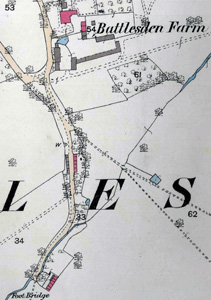Battlesden Registration and Early References
1672 Charles II issued a Declaration of Toleration for Protestants dissenting from the Church of England; this had the effect of some dissenting meeting houses registering with the Secretary of State. The Toleration Act of 1689 enshrined the right of protestants to dissent from the Church of England and, once again, encouraged meeting houses to register voluntarily with local quarter sessions |and Anglican church. Registration provided protection against persecution, laying a duty of protection upon magistrates and so was popular with nonconformists. Most registrations were made with quarter sessions until the middle of the 18th century, presumably due to the mutual antagonism of nonconformists and established Church. However, from that point registration with the Church, via the local archdeaconry| began to become the favoured method, because the archdeaconry Registrar would issue a licence at any time rather than during the days each quarter when the quarter sessions met.
Volume 81 published by the Bedfordshire Historical Records Society (2002) is devoted to returns made during episcopal visitations to the county by the Bishop of Lincoln in the early 18th century, edited by former County Archivist Patricia Bell. One of the questions asked was the number of nonconformist families in the parish; the various responses were as follows:
- 1706: "There is no Papist or reputed papist in this parish. No dissenter from the Church of England. No Meeting house for any such";
- 1709: "One Dissenter, a shee Anabaptist";
- 1717: "One dissenting woman called an Anabaptist. No Meeting-house";
- 1720: "Only one woman an Anabaptist. No Meeting House".
Bedfordshire & Luton Archives & Records Service has a reasonable number of registrations of nonconformist meeting houses in both the Quarter Sessions and Archdeaconry of Bedford archives. Registration continued through the 19th century even though persecution faded away - this was because registered buildings were allowed to claim exemption from parish poor rates, were exempt from control by the Charity Commission and were allowed to be licensed to carry out marriages. These things meant that registration became almost compulsory in practice for well established nonconformist meetings. This is fortunate for the local historian because sometimes the only surviving references to a nonconformist meeting occur as registrations.

Volume 110 published by the Bedfordshire Historical Records Society in 1996 and edited by Edwin Welch contains registrations of Bedfordshire nonconformist meetings drawn from a number of sources. Only one registration was noted for Battlesden [ABN1/2 and ABN2/424]: the house of James Creamer was registered in 1851 by William Stevens of Leighton Heath with John Bendle as witness. The denomination is, unfortuately, not stated though it is possible, to judge by other evidence, that he might have been a Wesleyan Methodist.
James Creamer was described as aged 60 on the 1861 census. The census indicates that Creamer lived in one of the now demolished rows of cottages on a track south of the village centre as shown in the 1882 map above. He most likely lived either in the row at the bottom by the foot bridge or the row on the right hand side of the track just north-west of the capital letter E. Battlesden Farm is now called Centre Farm